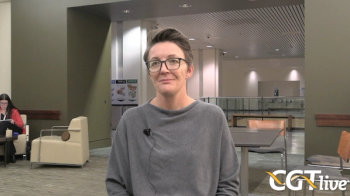
Gene therapy improves functional vision in Leber congenital amaurosis
A phase III gene therapy trial for Leber congenital amaurosis showed that patients’ mean mobility test scores promptly improved after treatment, and the benefit was sustained at 1 year, said Albert M. Maguire, MD.
By Cheryl Guttman Krader
Las Vegas-A phase III gene therapy trial for Leber congenital amaurosis showed that patients’ mean mobility test scores promptly improved after treatment, and the benefit was sustained at 1 year, said Albert M. Maguire, MD.
Treatment with adeno-associated viral vector to deliver the gene for human RPE65 (AAV2-hRPE65v2; SPK-RPE65) into the retinal pigment epithelium in patients with RPE65 mutation-associated inherited retinal dystrophies was safe and associated with highly statistically significant improvement in the primary endpoint assessing ambulatory vision, according to the results of the study.
“This is the first randomized, controlled phase III gene therapy trial for a genetic disease of any kind,” said Dr. Maguire, at Retina 2015 during the annual meeting of the American Academy of Ophthalmology.
“The primary endpoint in this study was functional vision measured by a mobility test, and it was developed to measure a clinically meaningful outcome,” said Dr. Maguire, professor of ophthalmology, University of Pennsylvania, Philadelphia. “Results from a secondary endpoint analyzing full-field light sensitivity were complementary in demonstrating improving functional vision corresponded with improved visual function.”
The study enrolled patients ages 4 years and older with visual impairment due to Leber congenital amaurosis caused by mutations in RPE65. Eligible patients had visual acuity of 20/60 or worse and/or visual field constricted beyond 20°.
A total of 31 patients were randomly assigned 2:1 to receive single subretinal doses of SPK-RPE65 administered by subretinal injection along with systemic prednisone perioperatively or delayed intervention at 1 year. The gene therapy was administered as 1.5E11 vector genomes per eye to both eyes via surgical procedures on separate days.
Subjects were stratified at baseline by age and baseline mobility test performance. They were videotaped while performing the mobility test at 7 different lux levels (range 1 to 400), which represent different environmental light conditions. The videos were graded by reviewers at an independent reading center who were masked to study and treatment group.
The primary endpoint results showed that mean mobility test scores promptly improved after SPK-RPE65 treatment, and the benefit was sustained at 1 year. However, mean mobility test scores remained unchanged in the control group.
“Whereas 65% of patients treated with SPK-RPE65 demonstrated the maximum improvement possible, meaning they passed the mobility test at the lowest lux level, none of the control patients did,” Dr. Maguire said.
Visual acuity changes were analyzed as a secondary endpoint, mainly as a safety measure since the gene therapy’s main effect is on rod-mediated photoreceptor function rather than on foveal cone-mediated function that is related to visual acuity. The results showed a trend toward better visual acuity in the SPK-RPE65 group.
Dr. Maguire also noted that a 3-line or greater gain in ETDRS visual acuity occurred in seven of the first treated eyes and four of the second treated eyes among patients in the SPK-RPE65 group, but in none of the control eyes.
“Most importantly, there was no decline in mean visual acuity in the treatment group after recovering from the surgical procedure,” Dr. Maguire said. “In addition, there were no serious adverse events related to the study drug or injection, and most ocular events were mild, infrequent, and problems occurring with vitrectomy surgery.”
Newsletter
Stay at the forefront of cutting-edge science with CGT—your direct line to expert insights, breakthrough data, and real-time coverage of the latest advancements in cell and gene therapy.










































